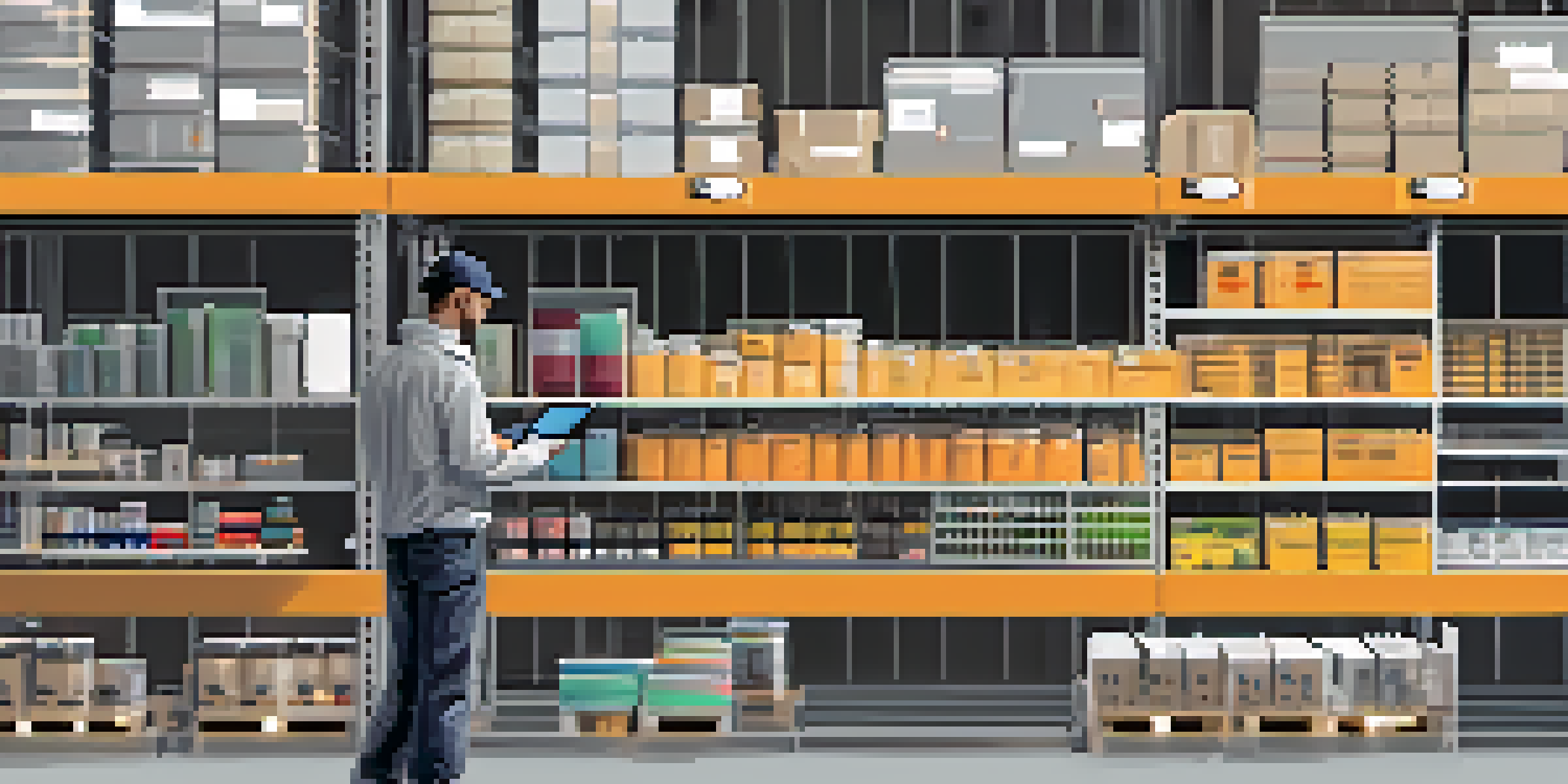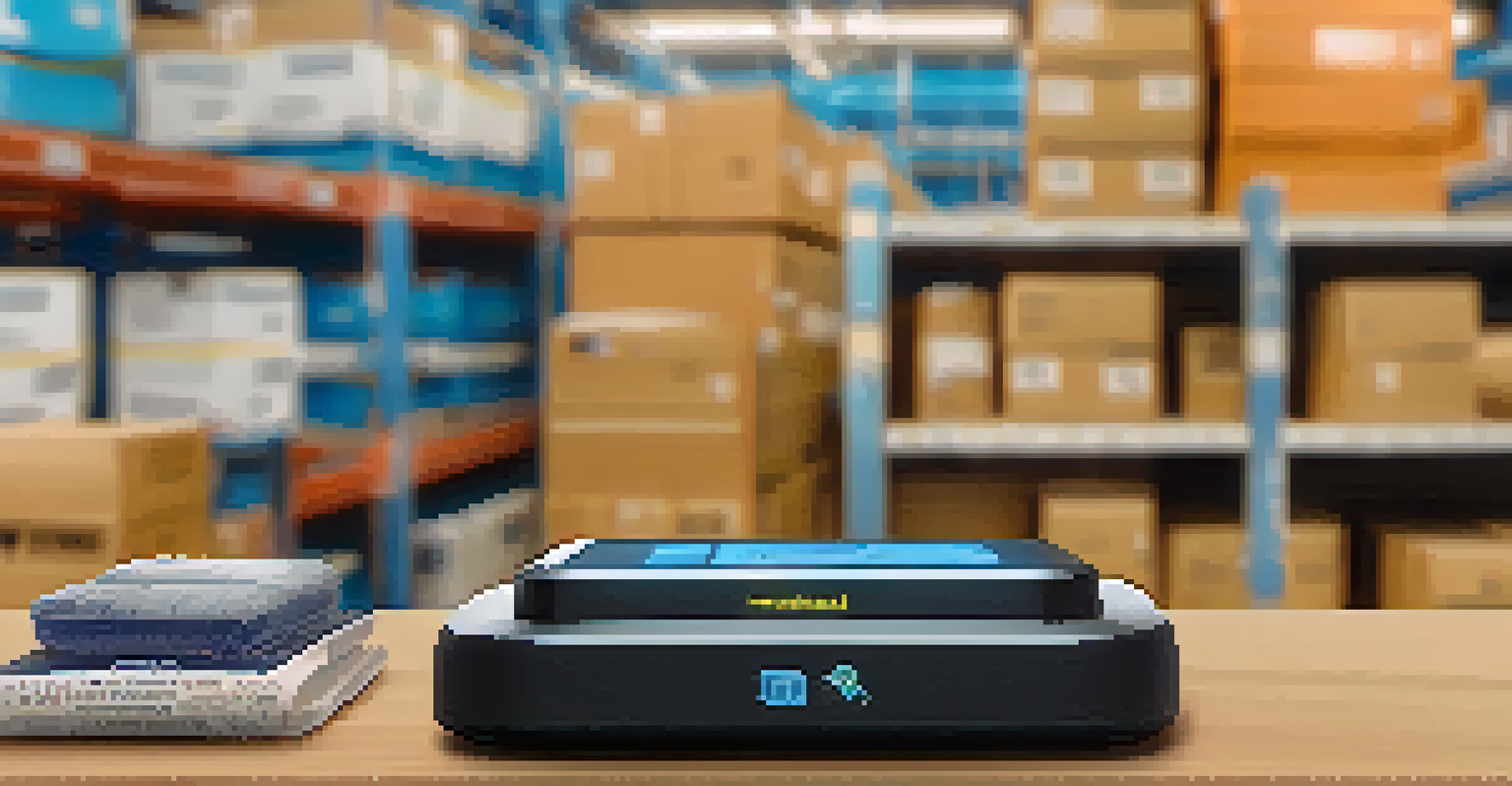Integrating Supply Chain Management Systems with IoT Devices

Understanding Supply Chain Management and IoT Integration
Supply Chain Management (SCM) is the process of overseeing the flow of goods and services, from raw materials to final products. With the rise of the Internet of Things (IoT), businesses are now able to connect various devices to streamline and enhance this process. This integration allows for real-time monitoring and data collection, which can lead to more informed decision-making.
The supply chain is a complex ecosystem, and the integration of IoT is the key to making it more efficient and responsive.
IoT devices include anything from smart sensors to GPS trackers, all designed to gather and share information. When integrated into SCM systems, these devices can help track inventory levels, monitor shipment conditions, and even predict maintenance needs for equipment. This level of connectivity fundamentally changes how businesses operate, offering unprecedented visibility across the supply chain.
By leveraging IoT technology, companies can identify inefficiencies and respond quickly to issues as they arise. For instance, if a temperature-sensitive product is at risk during transport, alerts can be sent immediately to mitigate potential losses. This integration not only improves operational efficiency but also enhances customer satisfaction by ensuring timely deliveries.
Key Benefits of IoT in Supply Chain Management
Integrating IoT devices into supply chain management systems brings numerous benefits. One of the most significant advantages is improved visibility throughout the supply chain. Companies can monitor their assets in real-time, allowing for better inventory management and reduced waste.

Another key benefit is enhanced data collection and analysis. With IoT devices constantly gathering data, businesses can analyze trends and make data-driven decisions. For example, if a particular product consistently runs low at specific times of the year, companies can adjust their production schedules accordingly to meet demand.
IoT Enhances Supply Chain Visibility
Integrating IoT devices allows for real-time monitoring, improving inventory management and operational efficiency.
Moreover, the integration of IoT can lead to cost savings. By optimizing routes for delivery trucks using GPS data, companies can reduce fuel consumption and lower transportation costs. These savings can be reinvested into the business, driving further growth and innovation.
Challenges in Integrating IoT with SCM Systems
While the benefits of integrating IoT with supply chain management are clear, there are also several challenges to consider. One major hurdle is the complexity of the technology itself. Businesses need to ensure that their existing systems can communicate effectively with new IoT devices, which may require significant upgrades or changes.
In today's fast-paced market, the ability to gather and analyze data in real-time is not just an advantage; it's a necessity for survival.
Data security is another critical concern. With so many devices collecting and transmitting data, the risk of cyberattacks increases. Companies must implement robust security measures to protect sensitive information and maintain trust with their customers and partners.
Finally, there’s the challenge of managing the vast amounts of data generated by IoT devices. Organizations need to invest in analytics tools and skilled personnel who can interpret this data and extract actionable insights. Without a solid strategy for data management, the potential benefits of IoT integration may be lost.
Real-World Examples of IoT in Supply Chain Management
Many companies are already reaping the rewards of integrating IoT into their supply chains. For instance, a leading retailer uses smart shelves equipped with weight sensors to track inventory levels in real-time. This helps them maintain optimal stock levels and ensures that popular items are always available for customers.
Another notable example is in the logistics sector, where companies use IoT-enabled tracking devices to monitor the condition of goods in transit. This technology can alert managers if there are any temperature fluctuations in refrigerated shipments, allowing them to take corrective actions before spoilage occurs.
Challenges of IoT Integration
Businesses face hurdles like technology complexity and data security risks when implementing IoT in supply chains.
These real-world applications highlight how IoT can transform supply chain operations, making them more efficient and responsive to customer needs. By sharing these success stories, businesses can inspire others to explore the potential of IoT integration.
Implementing IoT Solutions in Supply Chain Management
To successfully implement IoT solutions in supply chain management, businesses should start by identifying their specific needs and objectives. This might involve analyzing current inefficiencies or areas where real-time data could provide valuable insights. By defining clear goals, organizations can tailor their IoT strategy accordingly.
Next, it’s essential to choose the right IoT devices and platforms that align with those objectives. Companies should consider factors such as scalability, compatibility with existing systems, and the level of support offered by vendors. Investing in the right technology can save time and resources in the long run.
Finally, ongoing training for employees is crucial to ensure that everyone understands how to use the new systems effectively. By fostering a culture of innovation and continuous improvement, organizations can maximize the benefits of their IoT integration efforts.
Future Trends in IoT and Supply Chain Management
As technology continues to evolve, the integration of IoT into supply chain management is expected to become even more sophisticated. One emerging trend is the use of artificial intelligence (AI) to analyze data collected from IoT devices. AI can help businesses predict demand, optimize inventory, and even automate decision-making processes.
Additionally, advancements in blockchain technology may enhance the security and transparency of supply chain transactions. By combining blockchain with IoT, companies can create a secure, tamper-proof record of every transaction, making it easier to track products from origin to destination.
Future Trends in IoT and SCM
Emerging technologies like AI and blockchain are set to further revolutionize supply chain management through enhanced data analysis and security.
These innovations hold the potential to revolutionize supply chains, making them more agile and resilient. As businesses adapt to these changes, they will need to stay informed about the latest developments and continuously refine their strategies to maintain a competitive edge.
Conclusion: Embracing IoT for Supply Chain Success
In conclusion, integrating IoT devices with supply chain management systems presents a wealth of opportunities for businesses. From gaining real-time visibility to improving efficiency and reducing costs, the advantages are clear. However, it's essential to approach this integration thoughtfully, addressing challenges such as security and data management.
As companies continue to explore the potential of IoT, those that embrace these technologies will likely lead the way in innovation and customer satisfaction. By learning from real-world examples and staying ahead of trends, businesses can position themselves for long-term success.

Ultimately, the future of supply chain management is interconnected, and IoT is a key player in shaping that future. By investing in these technologies today, organizations can build a more resilient and responsive supply chain that meets the demands of tomorrow.